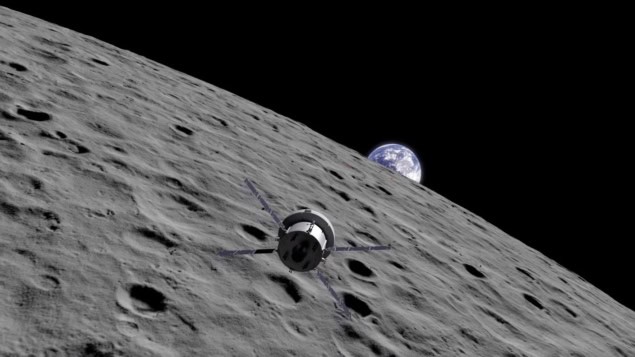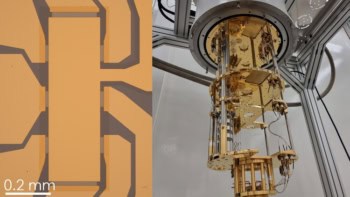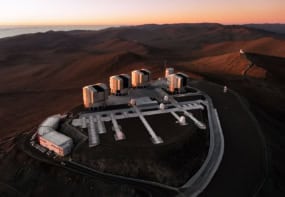
Atomic clocks on the Moon. It might sound like a futuristic concept, but atomic clocks already abound in space. They can be found on Earth-orbiting satellites that provide precision timing for many modern technologies.
The clocks’ primary function is to generate the time signals that are broadcast by satellite navigation systems such as GPS. These signals are also used to time-stamp financial transactions, enable mobile-phone communications and coordinate electricity grids.
But why stop at orbits a mere 20,000 km from Earth’s surface? Should we establish a network of atomic clocks on the Moon? This is the subject of a new paper by two physicists at NIST in Boulder, Colorado – Neil Ashby and Bijunath Patla.
They say that their study was inspired by NASA’s ambitious Artemis programme, which aims to land people on the Moon as early as 2026. The duo points out that navigation and communications on and near the Moon would benefit from a precision time standard. One option is to use a time signal that is broadcast from Earth to the Moon. Another option is to create a lunar time standard using one or more atomic clocks on the Moon, or in lunar orbit.
Faster pace
The problem with using a signal from Earth is that a clock on the Moon runs at a faster pace than a clock on Earth. This time dilation is caused by the difference in gravitational potential at the two locations and is described nicely by Einstein’s general theory of relativity.
Using that theory, the NIST duo calculate that a clock on the Moon will gain about 56 µs per day when compared to a clock on Earth. What’s more, this rate is not constant because of the eccentricity of the Moon’s orbit and the changing tidal effects of solar-system bodies other than the Earth, which would also cause fluctuations in the difference between earthbound and Moon-bound clocks.

X-ray ‘GPS’ unveiled by NASA
Because of these variations, the duo argue that it would be better to create a network of atomic clocks on the surface of the Moon – and in lunar orbit. This would provide a distributed system of lunar time, much like the distributed system that currently exists on Earth.
“It’s like having the entire Moon synchronized to one ‘time zone’ adjusted for the Moon’s gravity, rather than having clocks gradually drift out of sync with Earth’s time,” explains Patla. This could form the basis of a high-precision lunar positioning system. “The goal is to ensure that spacecraft can land within a few metres of their intended destination,” Patla says.
They also calculated the difference in clock rates on Earth and at the four Lagrange points in the Earth–Moon system. These are places where satellites can sit fixed relative to the Earth and Moon. There, clocks would gain a little more than 58 µs per day compared to clocks on Earth.
They conclude that atomic clocks placed on satellites at these Lagrange points could be used as time transfer links between the Earth and Moon.
The research is described in The Astronomical Journal.



